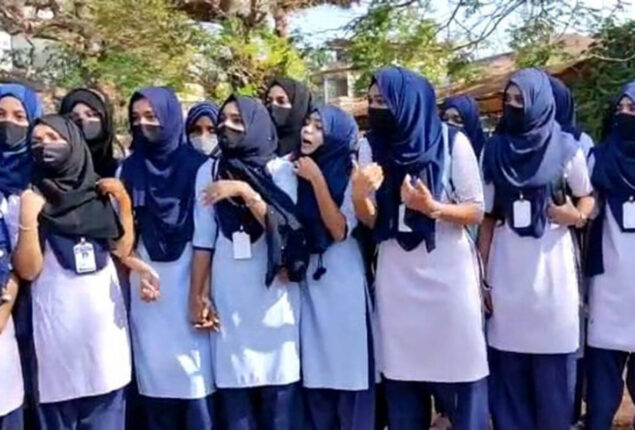China Covid: Beijing hit by restrictions before Congress
As Beijing is subject to rigorous security measures and COVID limitations in...

Supreme court judges conflict on wearing hijab
Due to conflicting opinions from two judges, India’s Supreme Court has been unable to rule on whether Muslim students may wear the hijab in classrooms and colleges.
One judge upheld a March ruling from the Karnataka high court that the headscarf was not “essential” to Islam.
The other claimed that wearing the hijab was a personal choice and that the ruling by the top court was incorrect. The decision was anticipated to put an end to a divisive, 10-month debate in India.
The discussion over the hijab will, however, continue as a result of Thursday’s event, as the justices have asked the chief justice of India to recommend the matter to a larger court after they were unable to reach a consensus.
It was widely anticipated that Justice Hemant Gupta, who presided over the two-judge panel, would maintain the high court’s verdict. He had said to a lawyer who was arguing for the freedom to wear the hijab that “you can’t push it to illogical ends” and questioned him if the “right to dress will encompass the right to undress likewise” during the hearing.
But the second judge, Justice Sudhanshu Dhulia, stated in his ruling that the high court erred by focusing on whether or not wearing the hijab was a necessary religious practice and that it was “ultimately a question of choice – nothing more and nothing less.”
Six Muslim girls were denied the right to wear the hijab in class at a government college in the Udupi region at the beginning of the year, which sparked the controversy.
The students could still wear the hijab outside of class, according to the college, which claimed it had only ordered them to do so inside. However, the females argued that since they had “a few male lecturers,” they should also be permitted to cover their hair in class. They were dressed in the college uniform of a loose tunic with pants and a shawl.
Teenage protesters against the ban began to show up at colleges wearing saffron scarves—the color associated with Hinduism—and right-wing organizations on both sides started making offensive remarks. Other states also saw demonstrations by saffron-clad Hindu students. The Karnataka government temporarily closed all high schools and institutions out of concern for violence.
The prohibition was then challenged in court by Muslim women demonstrators who said it was discriminatory and violated their freedom of speech and religion. They asserted that their right to wear whatever they liked and their obligation to cover their heads were protected by the Indian constitution.
The government challenged their assertion that the headscarf was fundamental to their religion and asserted that the state had the power to establish requirements for school and college uniforms.
The trial court decided that the government had the power to require students to wear uniforms and prohibited girls wearing hijabs from entering classrooms.
Catch all the India News, International News, Breaking News Event and Latest News Updates on The BOL News
Download The BOL News App to get the Daily News Update & Follow us on Google News.